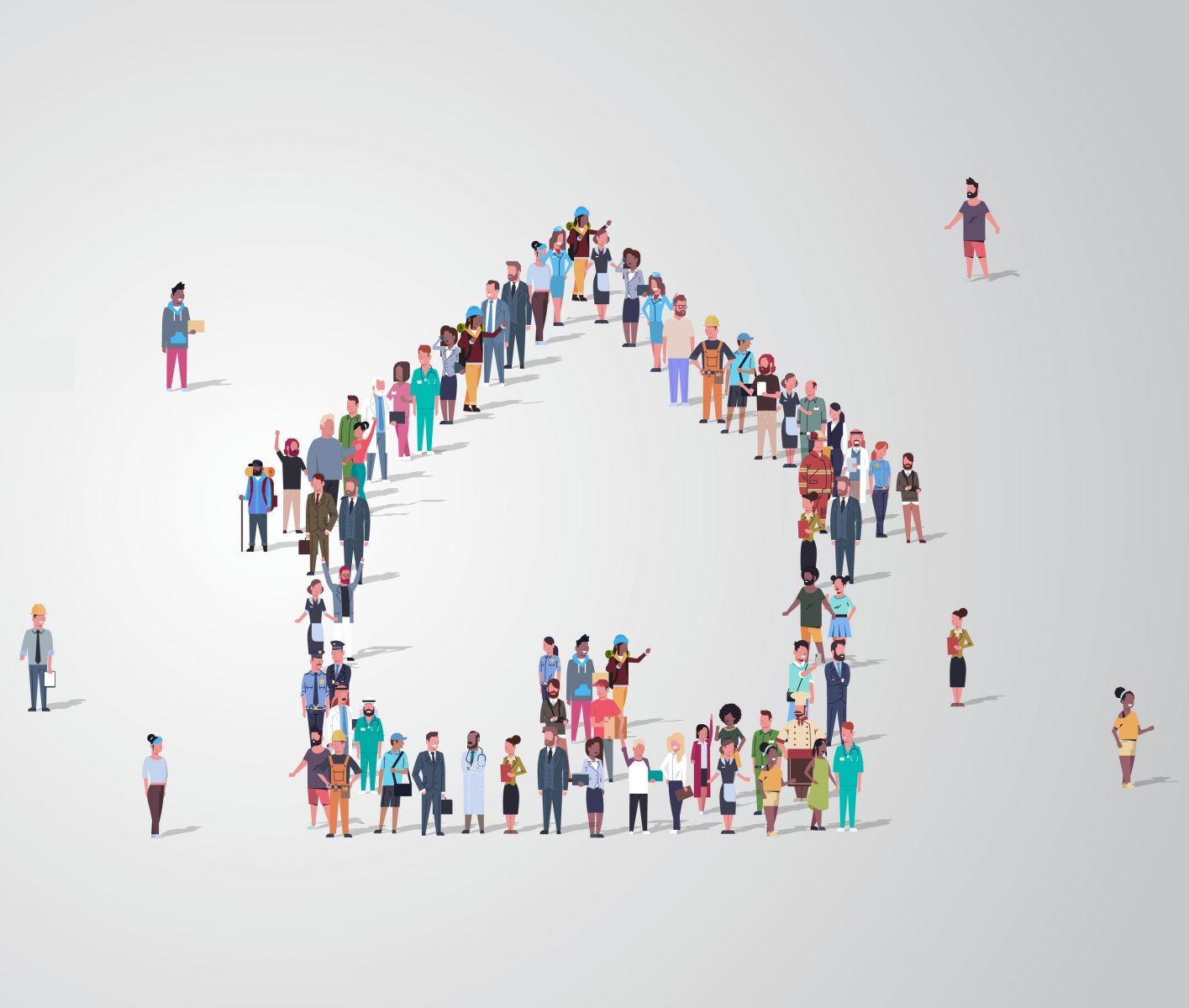To understand structural racism, look to our schools.
Education Lab - Local News
Posted on September 13, 2020
 Education Lab is a Seattle Times project that spotlights promising approaches to persistent challenges in public education. It is produced in partnership with the Solutions Journalism Network and is funded by a grant from the Bill & Melinda Gates Foundation, Amazon and City University of Seattle. Learn more about Ed Lab.
Education Lab is a Seattle Times project that spotlights promising approaches to persistent challenges in public education. It is produced in partnership with the Solutions Journalism Network and is funded by a grant from the Bill & Melinda Gates Foundation, Amazon and City University of Seattle. Learn more about Ed Lab.
It’s always time to talk about racial inequity in education.
But the police killing of George Floyd, and coronavirus school closures that may deepen vast opportunity gaps between Black and white students, are driving new conversations about how schools should confront structural racism.
Racial inequity is baked into the nation’s education system in ways big and small. Black children face the most extreme hurdles to academic success.
Within individual classrooms, teachers may mistake a Black preschooler’s chattiness for hyperactivity or bad behavior, instead of recognizing the child’s skillful storytelling abilities. Within public school districts, recruitment and hiring practices tend to leave out Black educators or pay them less than their peers. Higher education has a long history of excluding Black people entirely. Racism and hate crimes persist on many college campuses.
These inequities compound over the years when Black children and adults are in school. Some are insidious, such as false but pervasive cultural messaging that Black students are less capable learners than their peers. Others are overt: K-12 school policies allow students to be arrested on their campuses, and Black students face this fate far more often than others.
Education Lab, a project of The Seattle Times, was founded to examine how such problems are reinforced and to report evidence-based solutions that could help undo them. Here are some of the systemic ways public education creates barriers to learning for Black students.
Academics
The idea that success comes primarily from hard work minimizes systemic problems many Black children face.
Discrimination and racial bias against Black students begins as early as preschool. Several studies bear this out, including one from last year, in which researchers reported that teachers asked to rate students’ academic abilities scored Black children far below white peers with identical scores. Such implicit bias can have serious negative consequences: Teachers tasked with recommending students for gifted and talented programs, for example, might overlook Black students who would excel. In Seattle, the Black-white divide in such programs is among the nation’s largest.
Black students tend to receive lower scores on standardized math and English tests than most other groups and are underrepresented in advanced courses.
How we got here:
- Negative and racist societal messages about Black students’ academic abilities and strengths undercut their views of themselves and can hurt test performance
- Educators may not recognize the strengths of Black children, such as strong oral storytelling skills, which standardized tests don’t measure
- Gifted and talented programs disproportionately leave out Black students
- Black students are more likely to attend schools with inexperienced or low-paid teachers
School climate is also important: Whether Black students feel safe and like they belong, or have adults they trust or who look like them at school, may affect how well they perform on assignments and standardized tests; they are more likely to enroll in honors classes, for instance, if those courses are taught by Black teachers. Seattle Public Schools has created a department devoted to the achievement of Black boys and teenagers, a population officials deem “furthest from educational justice.”
Black and Latino students are also far more likely to attend schools in low-income neighborhoods, which is tied closely to academic achievement, in part because of a lack of resources.
Black students are far less likely to have a teacher, counselor or principal who looks like them during the course of their education compared to white students.
How we got here:
- Cyclical problem: Black students don’t see themselves represented at school and avoid the teaching profession
- The costs of college can be prohibitive for aspiring Black teachers, keeping enrollment in teacher programs low
- Teacher preparation program tests are expensive and may carry cultural biases
Discipline
Zero-tolerance discipline policies, like mandatory suspensions or expulsions for offenses that don’t include violence or drugs, fuel the school-to-prison pipeline. Such policies fall hardest on Black students: In the 2015-16 school year, for instance, Black students nationwide made up about 15 percent of public school students but 31 percent of those referred to police or arrested at school. In Seattle Public Schools last year, Black students made up half of police referrals, but only 14% of the district’s enrollment.
Black preschoolers are about 3.6 times more likely to receive at least one out-of-school suspension than white preschoolers.
How we got here:
- Implicit bias among educators that assumes Black children are troublemakers
- Adults view Black children as less innocent than white children
- Zero-tolerance policies mandate punitive consequences for certain behavior, including minor infractions
- Disproportionate rates and severity of discipline begin in preschool and extend over the years of Black children’s education. A few years ago, Education Lab took a close look at how such policies play out in schools across the Puget Sound region. The data was bleak. Discipline varies by district, but Black students were disciplined at disproportionately higher rates across the board.
Black students are about 5 times more likely than white students to be detained in juvenile justice facilities and are disproportionately sent from juvenile to adult court.
How we got here:
- Schools disproportionately suspend and expel Black students
- Schools disproportionately refer Black students to the police
- Negative relationship cycle between teachers and Black students may escalate to punishment
- Zero-tolerance policies push students out of schools for days or weeks each year
The series also examined fixes, such as using in-school suspensions instead of sending children home for long periods, or keeping truant children out of court. King County court officers began using restorative justice instead of traditional prosecution with young people who commit felonies.
Higher Education
Black students face significant barriers that keep them from enrolling in college and ultimately earning a degree. It starts with their K-12 education: If schools fail to prepare them early on, they’re more likely to struggle to get in or possess study habits that allow them to persist and earn a degree. Students who go to school in low-income neighborhoods might not have the standardized test scores required for admission.
Black student enrollment in college is increasing in the U.S., but is still less common than among white students and many other racial and ethnic groups.
How we got here:
- K-12 schools may not adequately prepare Black students for higher education
- Policy making, such as banning affirmative action, hurts Black enrollment at four-year schools
- Financial barriers, such as college application fees and testing fees, affect acceptance rates and ability to secure scholarships.
Discriminatory laws and practices have excluded generations of Black students, making the “college tradition” less common among Black families. Black college students face hurdles once they enroll. Some highly selective schools use test scores for admission to certain majors, such as those in the STEM fields, which works to systemically keep out many Black students. Many predominantly white institutions also have a history and culture that makes Black students feel unwelcome.
SEE ALSO:
More Race Relations Articles
Sexual Bias Articles
Mental Health Articles
How Drugs and Alcohol Affect the Brain and Body
WA. Counselor Directory: find a therapist near you
How helpful is this web page to you?
(and how can we can improve this page for you?)
not helpful
very helpful
Other Articles
To understand structural racism, look to our schools.
Education Lab - Local News
Education Lab is a Seattle Times project that spotlights promising approaches to persistent challenges in public education. It is produced in partnership with the Solutions Journalism Network and is funded b... read more
New study documents systemic racism in Seattle restaurants
What happens if a white server and a person of color with the same qualifications apply for jobs at 100 different upscale Seattle restaurants? Using pairs of actors to conduct same-day tests, a new study by... read more
Percentage of Black residents in Seattle is at its lowest point in 50 years
For Seattle, the 2010s were transformative, and not just in terms of population growth. As the cost of living skyrocketed and gentrification spread across the city, many neighborhoods were fundamentally chan... read more
This project is trying to reverse gentrification by bringing people back to the Seattle Central District
When Andrese Collins bumps into people he grew up with in the Central District, the conversation always starts the same way: “Where you’d go?” Most of his childhood acquaintances have m... read more





